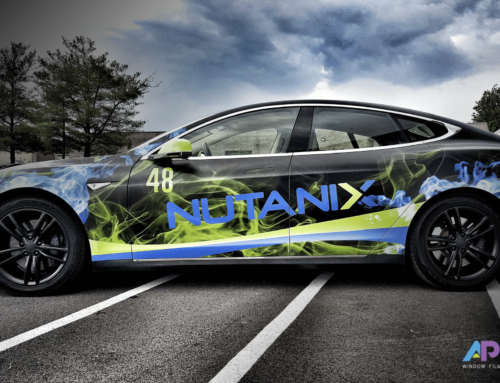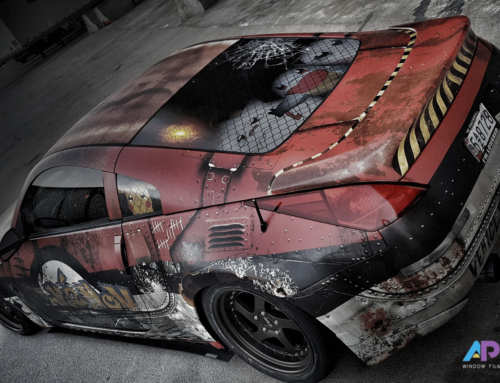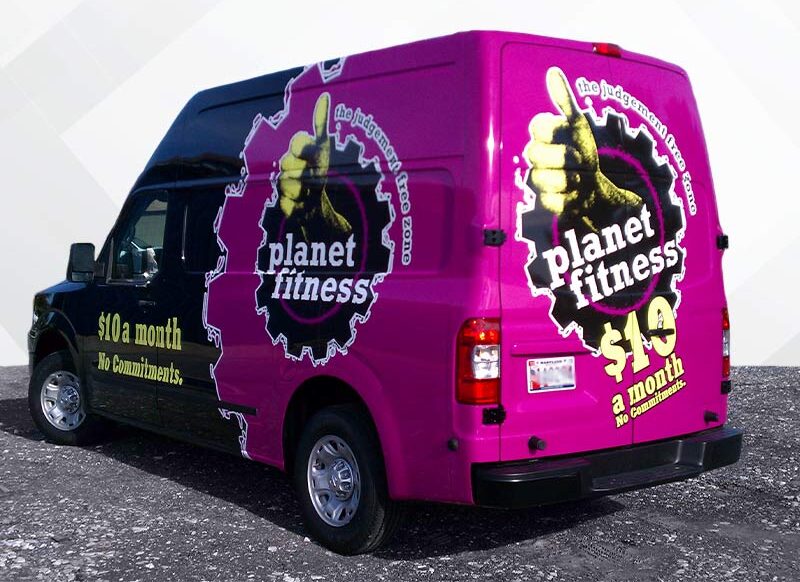
Most business owners believe out-of-home advertising is dead. They probably don’t know that a single, wrapped vehicle can generate 12 million impressions in just one year.
Commercial vehicle wraps are a powerful and cost-effective way to advertise your business. They transform ordinary, company-owned vehicles into mobile billboards that can generate millions of impressions every year while on the road.
Here’s a preview of what you’ll learn in this essential guide:
- How Commercial Vehicle Wraps Help Brand Your Business
- 21 Benefits of Commercial Vehicle Wraps
- A Step-By-Step Guide to The Vehicle Wrapping Process
- Cost-Benefit Analysis of Vehicle Wrapping for Your Business
- How to Design Your Vehicle Wrap (Tips + Tricks)
- 19 Tips on Selecting a Vehicle Wrap Service
- How to Wrap Your Commercial Vehicles Legally
P.S., at AP Graphics, we’ve seen firsthand how effortless vehicle wrapping can make your OOH advertising. Vehicle wraps elevate your brand, boost impressions, and protect your automobiles from the elements. Get a free quote today to see if they’re right for your business.
How Commercial Vehicle Wraps Help Brand Your Business
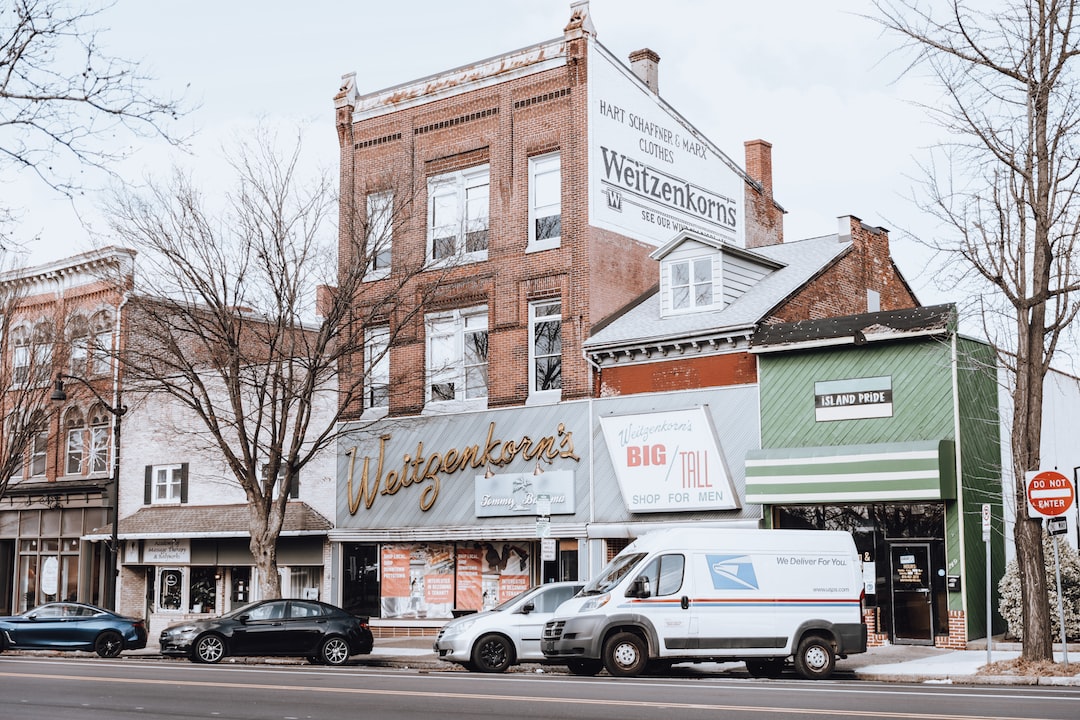
What Are Vehicle Wraps?
Commercial vehicle wraps are high-quality, durable vinyl stickers that cover (or wrap) a vehicle in graphics. They are designed to adhere tightly to the vehicle, creating the illusion of a custom paint job. They’re a fantastic way to grab attention on the road due to their eye-catching designs and vibrant colors.
Vehicle wraps can be categorized into three main types:
- Full Vehicle Wraps: These wraps cover the entire exterior of a vehicle, providing maximum visibility for your brand. They allow plenty of space for creative designs and prominent branding.
- Partial Vehicle Wraps: As suggested by the name, these wraps only cover a portion of the vehicle, such as the hood, sides, or rear. They are more cost-effective than full vehicle wraps but still offer good visibility.
- Vinyl Lettering: This type of wrap only involves text, usually the company’s name, contact information, and maybe a slogan or tagline. It’s a minimalist, professional look that’s particularly good for businesses that prefer subtle branding.
These options provide flexibility for businesses of all sizes and budgets, helping to make your company vehicles a powerful part of your marketing strategy.
Commercial Vehicle Wraps in Business Marketing
Vehicle wraps are crucial in business marketing, serving as a mobile billboard that provides extensive exposure for your brand.
- Every journey your vehicles make becomes an advertising opportunity, reaching a wide range of potential customers that traditional advertising might miss.
- Vehicle wraps can significantly increase brand recognition and recall, making your business more memorable to consumers.
- They provide a one-time investment for long-term advertising, unlike recurring costs associated with digital or print media campaigns.
This cost-effectiveness, combined with their reach and visibility, makes vehicle wraps a highly impactful tool in business marketing strategies.
21 Benefits of Commercial Vehicle Wraps

- Increased visibility and brand awareness. A single vehicle can generate up to 70,000 impressions daily.
- Cost-effectiveness compared to traditional advertising. The average CPM for vehicle wraps is $0.45, vs. $3.56 for traditional billboards.
- Longevity and durability of wraps. High-quality wraps can last 5-7 years, providing long-term advertising for a one-time cost.
- Customization possibilities. Commercial ehicle wraps can be designed to suit any brand image and marketing campaign.
- Consistency in branding across all vehicles. Vehicle wraps can ensure that all company vehicles have uniform branding and messaging.
- Flexibility to change or update designs easily. Unlike traditional paint jobs, vehicle wraps can be changed or updated as needed.
- Versatility in targeting. Vehicles can be wrapped to reach specific demographics or geographic areas, providing a targeted approach to advertising.
- Non-intrusive form of advertising. Unlike traditional media that interrupts consumer viewing, vehicle wraps do not interrupt and instead serve as an informative visual.
- Protection of vehicle paint from UV rays and minor scratches. Commerical vehicle wraps provide a layer of protection for the vehicle’s paint, helping to preserve its value.
- Enhanced professionalism and credibility. A professionally wrapped vehicle can lend a sense of legitimacy to a business and instill confidence in potential customers.
- Increased return on investment (ROI). Due to their cost-effectiveness and longevity, vehicle wraps can generate significant ROI for businesses.
- Easy to track effectiveness through call-to-action graphics and QR codes. Vehicle wraps can include clear calls-to-action and QR codes for consumers to engage and measure the advertisement’s effectiveness easily.
- Easy to remove without damaging the original paint job. When it’s time to update or remove a vehicle wrap, it can be done without causing damage to the underlying paint, unlike traditional paint jobs.
- No recurring costs once installed. Vehicle wraps have no recurring costs after installation, making them a budget-friendly option for long-term advertising.
- Ability to reach a wide range of potential customers during daily commutes or while parked at a job site.
- Versatility in advertising for various industries. Vehicle wraps can be customized for any type of business, from food trucks to construction companies.
- Environmentally friendly advertising option. Unlike traditional media that requires paper or other materials, vehicle wraps use existing vehicles as the canvas, reducing waste and promoting sustainability.
- Ability to showcase products or services on the vehicle wrap. Vehicle wraps can include eye-catching graphics and images of products or services offered, effectively showcasing them to potential customers on the go.
- Can act as a conversation starter and create interest in the brand. A well-designed and attention-grabbing vehicle wrap can spark conversations about the business and create interest in the brand among potential customers.
- Easy to update or change designs as needed without replacing the entire wrap. If a business rebrands or changes their marketing strategy, it is easy to update the design of the vehicle wrap without having to replace it completely.
- Can be used for both short-term and long-term advertising campaigns. Vehicle wraps are versatile and can be used for temporary promotions or long-term branding initiatives, providing business flexibility.
A Step-By-Step Guide to The Vehicle Wrapping Process
Before we delve into the detailed process of vehicle wrapping, it’s essential to understand that it’s a meticulous procedure requiring professional expertise.
At AP Digital, our process involves extensive planning, careful design selection, precise measurements, thorough preparation of the vehicle’s surface, skilled application of the wrap, and finally, rigorous quality control.
This step-by-step guide will provide a comprehensive walk-through of how commercial vehicle wraps are done:
Preparing a Vehicle for Wrapping
The preparation process is critical to ensure the wrap adheres correctly and lasts longer. Here are the steps involved in preparing a vehicle for wrapping:
- Vehicle cleaning – The vehicle must be thoroughly cleaned to remove any dirt, debris, or wax residue that may hinder the wrap’s adhesion.
- Surface inspection – Before applying the wrap, our professionals inspect the vehicle’s surface for any damage or imperfections that may affect the wrap’s appearance.
- Surface preparation – Any damaged areas are repaired, and the entire surface is sanded down to create a smooth and clean canvas for the wrap application.
- Removal of exterior elements – Any emblems, badges, or trim pieces are carefully removed to ensure a seamless and professional-looking wrap.
Designing the Wrap
After preparing the vehicle’s surface, the next step is designing the wrap. Our design team works closely with our clients to create eye-catching, effective designs that align with their branding objectives.
The design process involves:
- Conceptualization – Our designers work with clients to understand their brand, target audience, and design preferences.
- Visual mock-ups – We create visual mock-ups of the wrap design to give clients a realistic idea of how it will look on their vehicle.
- Revisions and finalization – We work closely with clients to make any necessary revisions to the design until they are completely satisfied. Once approved, the design is finalized for printing.
Printing and Lamination
Once the design is completed and approved, the next step is printing and lamination. Our state-of-the-art printers use high-quality materials to produce vibrant colors and crisp graphics that are essential for an eye-catching wrap. The printing process involves:
- Color profiling – Our printers are meticulously calibrated to ensure accurate colors and consistency during the printing process.
- High-quality materials – We use the best quality vinyl, ink, and lamination films to ensure long-lasting, durable wraps.
- Lamination – After printing, the wrap is laminated with a protective film that adds durability and UV resistance.
The Installation Process
The final stage of the process is installation. Our experienced installers ensure a seamless and bubble-free application of the wrap to achieve a professional-looking finish. The installation process includes:
- Surface preparation – We thoroughly clean and prepare the vehicle’s surface before applying the wrap to ensure proper adhesion.
- Careful application – Our installers use specialized tools and techniques to carefully apply the wrap, ensuring a smooth and uniform finish.
Post-Installation Care and Maintenance
To ensure your vehicle wrap’s longevity, following proper care and maintenance procedures is essential. Here are some tips to keep in mind:
- Avoid harsh chemicals – Avoid using harsh chemicals or abrasives on your vehicle wrap as they can damage the vinyl and affect the graphics.
- Hand wash only – Hand washing with a mild detergent and water is the best way to clean your vehicle wrap. Avoid using high-pressure washers or car washes with brushes.
- Protect from extreme temperatures – Extreme heat or cold can cause the vinyl to shrink or expand, affecting the wrap’s appearance and adhesion. Park your vehicle in a covered area whenever possible.
- Remove stains promptly – If any spills or stains occur on the wrap, clean them off as soon as possible. Leaving stains for an extended period can cause permanent damage to the graphics.
Cost-Benefit Analysis of Vehicle Wrapping for Your Business
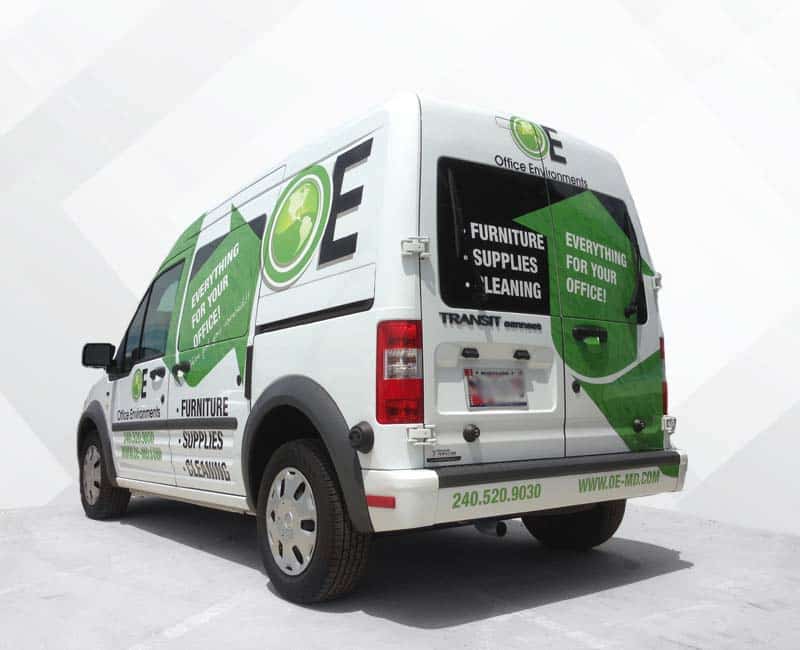
Factors Influencing the Cost of Vehicle Wraps
Various elements affect the cost of commercial vehicle wraps, making it crucial to consider these aspects when budgeting for this type of marketing strategy.
- Material – The quality and type of vinyl used significantly impact the overall cost. Premium vinyl, such as cast vinyl, is more expensive due to its durability and ability to conform to a vehicle’s curves and recesses.
- Vehicle Size and Type – The dimensions and type of vehicle also influence the cost. Larger vehicles require more material and labor, making the wrapping process more expensive. The complexity of the vehicle’s structure can also add to the cost, as vehicles with more curves and indentations require additional time and skill to wrap.
- Design Complexity – The complexity of the wrap design plays a crucial role in determining the cost. Simple designs with minimal colors and graphics are generally less expensive than intricate designs with numerous colors and detailed graphics.
- Labor and Installation – The time and expertise needed for the installation process are factored into the cost. Skilled installers are needed for a high-quality finish, adding to the overall expense.
Considering these factors, it becomes evident that vehicle wrap costs can vary significantly. You can get a free quotation from AP Digital to understand what you’re getting for your money.
Average Price Ranges for Different Types of Wraps
While the exact cost of vehicle wraps will depend on the factors mentioned above, we can consider average price ranges to give you a rough idea:
- Spot Graphics: Typically costing between $300 to $600, these involve smaller graphics or decals applied to specific areas of the vehicle rather than full coverage.
- Partial Wraps: Covering 25% to 75% of the vehicle, these wraps cost between $500 to $2,000 on average, depending on the complexity of the design and the size of the vehicle.
- Full Wraps: Providing complete coverage, full vehicle wraps will generally set you back between $2,000 to $6,000, factoring in the higher material and labor costs.
- Custom Wraps: These bespoke designs can vary greatly in price, from $500 to $6,000 and beyond, depending on the intricacy of the design and the type of vinyl used.
Remember, these are average price ranges. For a detailed quotation tailored to your specific requirements, you can contact AP Digital here.
Long-term Investment vs Short-term Advertising Costs
When comparing the cost of vehicle wraps to more traditional advertising methods, it’s crucial to consider the longevity and reach of your investment.
- Traditional advertising methods like billboards often incur recurring costs for their limited airtime or placement duration.
- Vehicle wraps provide durable and continuous advertising over a long period, typically 3-5 years, all for an upfront cost.
While the initial expenditure for a vehicle wrap might seem steep, its long-term benefits and potential return on investment make it a worthwhile consideration for your marketing strategy.
How to Design Your Vehicle Wrap (Tips + Tricks)
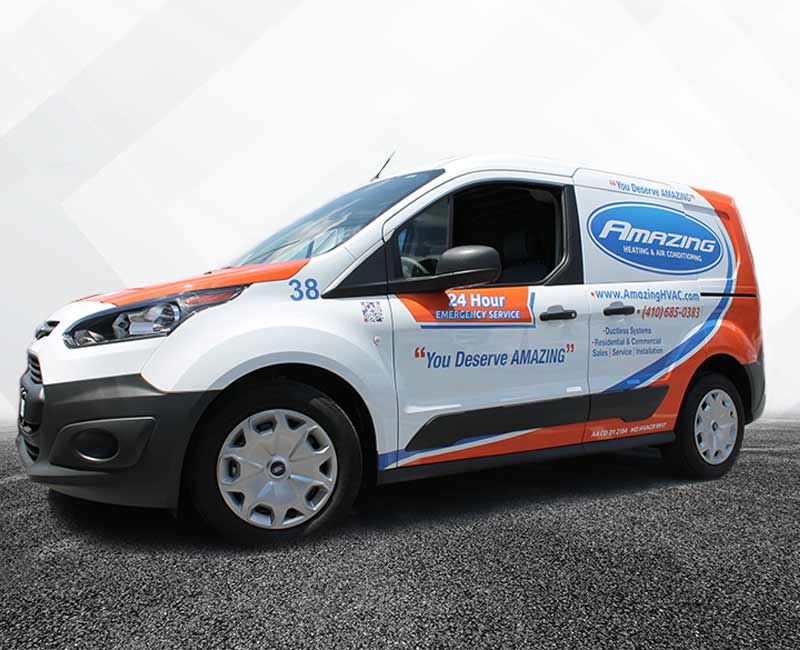
The principles of effective vehicle wrap design are a critical component of a successful advertising strategy.
- Simplicity: Avoid cluttering your design with too much information. Keep your message clear, concise, and easy to read at a glance.
- Use of Color: Use colours wisely to enhance visibility and grab attention. Ensure your company colours are represented accurately for strong brand recognition.
- Legible Fonts: Use large, bold fonts for legibility at a distance. Avoid overly intricate typefaces that may be difficult to read when the vehicle is in motion.
- Include Essential Information: Make sure to include your company name, logo, contact information, and a simple, compelling call to action.
- Quality Images: Use high-resolution images for a professional look. Pixelated or low-quality images can negatively impact the overall impression of your brand.
- Conformity to Vehicle Shape: Design your wrap considering the unique shape and size of your vehicle. Remember that the design will need to contour to the vehicle’s curves and lines.
- Consistency: Maintain brand consistency across all your vehicle wraps for better brand recognition.
Designing an effective vehicle wrap requires a delicate balance of creativity and strategic planning. The ultimate goal is to create a design that is not only pleasing to the eye, but also clearly communicates your brand message to your target audience.
Want some more insider advice?
Here are some tips from the professionals at AP Graphics:
- Contrast: Use contrasting colors to make the text and images pop out. This can help make the message on your vehicle wrap more visible and memorable to onlookers.
- Visual Hierarchy: Prioritise the most important information in your design. Larger, bold fonts draw attention and should be used for key messages, while secondary details can be in smaller fonts.
- Innovative and Unique Designs: Try to incorporate innovative and unique designs to make your vehicle wrap stand out. A distinctive design can make your brand memorable.
- Incorporate a Tagline: A catchy tagline can leave a lasting impression. Make sure it’s concise and resonates with your brand ethos.
- Balanced Composition: Strive for a balanced composition in your design. Overly complex or chaotic designs can be overwhelming and hard to understand.
Remember, an effective vehicle wrap design isn’t just about aesthetics—it’s about ensuring your brand message is distinct and memorable.
Using templates can be a great start for your vehicle wrap design, especially if you’re uncertain about the layout or aesthetics. Templates provide a structured framework that you can personalize to reflect your brand.
However, consider hiring a professional design service for a truly distinctive and professional result.
- They have the skills and experience to create a design that not only fits your vehicle perfectly but also mirrors your brand identity and core values.
- They can provide invaluable advice on colour schemes, imagery, and typography that will enhance your brand’s visibility and memorability.
- A professional design service can also help with the technical aspects of vehicle wrap installation, ensuring a flawless and long-lasting result.
19 Tips on Selecting a Vehicle Wrap Service
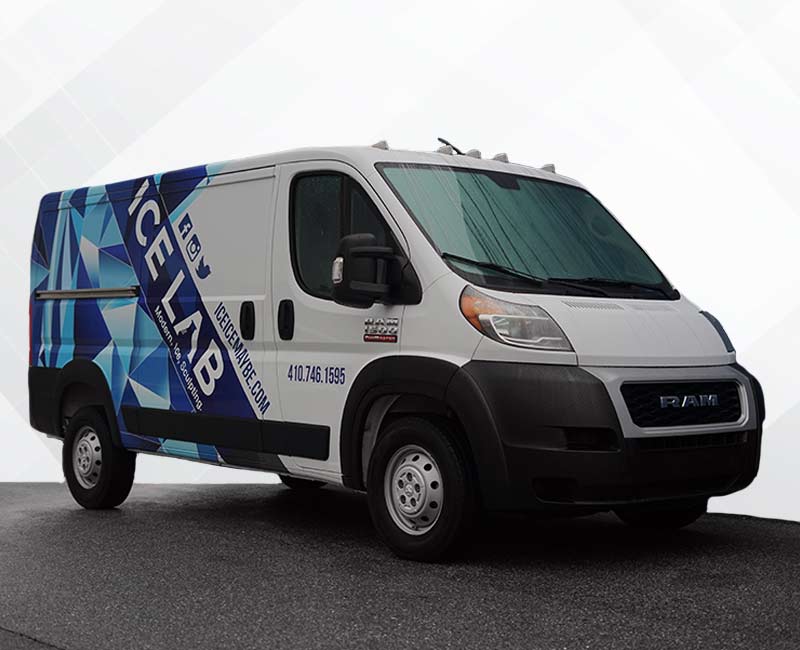
When it comes to selecting a vehicle wrapping company, there are several factors that you should take into consideration:
- Experience and Expertise: Expertise in dealing with various types of vehicles and a robust portfolio of previous work can be a good indicator of their level of competence.
- Quality of Materials: The quality of the wrap is crucial for its longevity and visual appeal. Ask about the materials they use, and ensure they’re high-grade and durable.
- Design Services: A company offering comprehensive services, including design, can be a plus. They should be able to help create striking and effective designs tailored to your brand.
- Installation and Aftercare: Check if the company provides installation services and offers guidelines for maintenance and aftercare of the wrap.
- Customer Reviews and Testimonials: Take a look at the reviews and testimonials from past clients to gauge the company’s reliability and the quality of their service.
- Pricing: Finally, consider pricing. While it might be tempting to opt for the cheapest option, remember that quality workmanship and materials come at a cost.
By paying attention to these factors, you can ensure that you choose a vehicle wrapping company that provides excellent service and results that align with your branding goals.
Questions to Ask Your Vehicle Wrap Service Provider
To help further in your selection process, here are some pertinent questions you might ask potential service providers:
- Can you provide examples of your past work? This allows you to see the quality and variety of their work firsthand.
- What materials do you use for the wraps? This question can help ascertain the durability and quality of the wraps they offer.
- Do you offer design services? If so, can you tailor them to my brand’s specific needs? A positive response ensures they can provide a design that resonates with your brand vision.
- Do you provide installation services? You want to be sure that they can assist with the technical aspects of wrap installation.
- Can you provide guidelines for maintaining the wrap? This will help you ensure the longevity of your investment.
- Can you share some testimonials from past clients? This helps gauge the company’s reputation and reliability.
- What are your rates for the services? Understanding their pricing can help you assess whether their service fits within your budget.
What to Look Out For When Reviewing a Portfolio
When reviewing portfolios and client testimonials, there are a few key points to bear in mind:
- Variety of Work: Look for a wide range of designs and applications in the portfolio. This signifies a versatile company capable of meeting diverse client needs.
- Quality over Quantity: Don’t judge solely based on the number of projects; the quality of work is equally important.
- Relevance of Previous Work: Assess how much of their past work aligns with what you envision for your brand.
- Customer Satisfaction: Pay special attention to the feedback provided by previous clients. This gives you insights into the company’s customer service and reliability.
- Consistency: Look for consistency in positive reviews. A reliable company will have a continual record of satisfied customers.
- Red Flags: Keep an eye out for any negative reviews or recurring issues reported by clients. Such patterns might indicate potential problems you could face.
Keeping these points in mind will guide you in effectively evaluating portfolios and client testimonials, enabling you to make an informed decision.
How to Wrap Your Commercial Vehicles Legally
When planning to wrap your commercial vehicles, it is vital to understand and adhere to the local regulations that govern such modifications. Here are some tips to help you navigate these rules:
- Research Specific Laws: Laws regulating commercial vehicle wraps can vary greatly from one location to another. Make sure to conduct thorough research or consult a local authority to understand the specific regulations in your area.
- Size and Placement Regulations: There may be laws restricting the size of the advertisement or its placement on the vehicle. Familiarise yourself with these rules to ensure your wrap is compliant.
- Content Restrictions: Some jurisdictions may prohibit certain types of advertising content on commercial vehicles. Be aware of these restrictions when designing your wrap.
- License and Registration: Some areas may require special licenses or registration for vehicles with commercial branding. Ensure you have all necessary documentation to avoid legal complications.
- Regular Updates: Regulations can change over time. Keep yourself updated on any changes to the local laws to maintain compliance.
By following these guidelines, you can ensure your vehicle wraps not only catch the eye but also comply with your local laws, preventing any unnecessary legal issues.
Get Your Business Brand on The Move Today with AP Graphics
Here are some key takeaways:
- Understand Vehicle Wraps: Commercial vehicle wraps are high-quality vinyl stickers used for branding and advertising, available in full, partial, and vinyl lettering options.
- Recognize the Benefits: A single vehicle wrap can generate up to 70,000 daily impressions, offering increased visibility, cost-effectiveness, and customization options.
- Consider Design Principles: Effective vehicle wrap designs should be simple, use legible fonts and colors, and include essential brand information for maximum impact.
- Evaluate Cost vs. Benefit: While initial costs vary, vehicle wraps offer a long-term advertising solution with no recurring costs, making them a financially sound marketing strategy.
- Select the Right Service: Choose a vehicle wrap service based on their experience, quality of materials, design capabilities, and customer reviews to ensure a professional and effective wrap.
- Comply with Legal Standards: Ensure your vehicle wrap adheres to local size, placement, and content laws to avoid legal complications.
Advertising platforms are saturated, and consumers’ attention spans are shrinking. Standing out can be challenging for any business, but vehicle wraps present a unique, highly impactful solution.
With AP Graphics, your business can transform simple vehicles into mobile billboards, broadcasting your brand message to countless potential customers daily. We offer an array of options ranging from full to partial wraps and vinyl lettering, each tailored to your brand’s aesthetic and message. Explore what vehicle wrap advertising can do for your business with AP Graphics today.

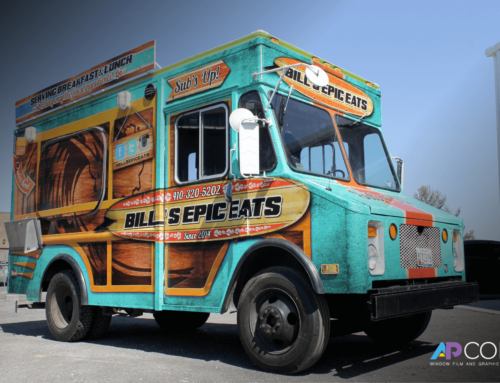
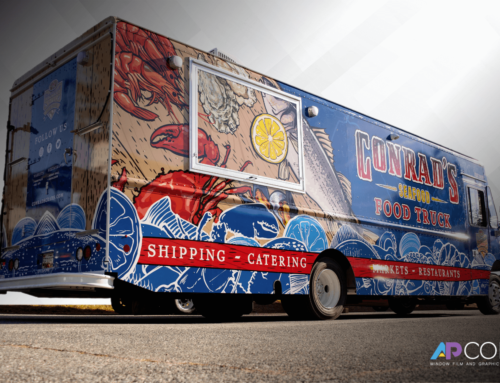
![The 5 Best Custom Car Wraps Virginia Has To Offer [Reviewed]](https://www.vehiclewrapping.com/wp-content/uploads/2024/02/Custom-Car-Wraps-500x383.png)
